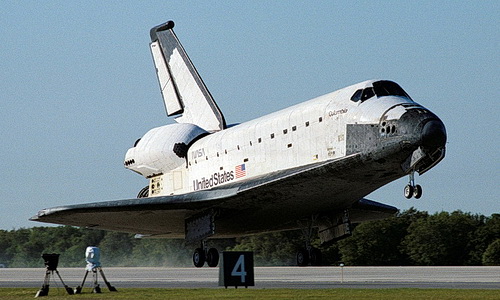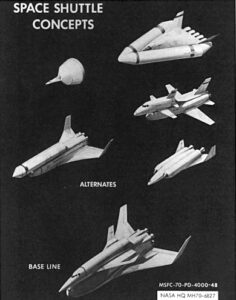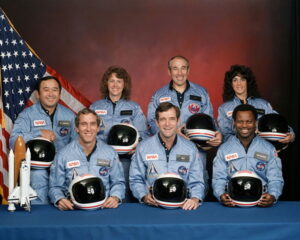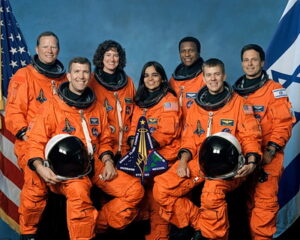
The End of a Successful Era in Space and the Beginning of a New One
In 1975, the Apollo space program came to an end, along with it a legacy of unparalleled achievements, but this was only the beginning.
NASA was already working on a new venture for a more efficient spacecraft that they could reuse instead of relying on the disposable rockets that cost them billions of dollars to build each time.
This idea of a reusable rocket that could launch astronauts into space, but dock and land like an airplane were well-accepted for future space travel.
Enter the Space Shuttle Program

In 1972, President Nixon announced that NASA would develop a reusable space transportation system (STS). They decided that the shuttle would consist of an orbiter attached to solid rocket boosters and an external fuel tank. This design was considered safer and more cost-effective.
One of the first obstacles was to design a spacecraft that didn’t use ablative heat shields, which subsequently burned up each time the shuttle re-entered the Earth’s atmosphere.
For the shuttle to be reusable, a different strategy would have to be initiated. The designers came up with an idea to overlay the craft with insulating ceramic tiles that would absorb the heat of reentry, without causing any danger to the astronauts.
The First Flights
The first of four test flights began in 1981, leading to operational flights starting in 1982. They were used on a total of 135 missions from 1981 to 2011. The launchpad used was the Kennedy Space Center in Florida.
Like the previous Saturn V rocket, the Space Shuttle had different components of its own, which included the Orbiter Vehicle (OV), a pair of recoverable solid rocket boosters (SRBs), and the expendable external tank (ET), containing liquid hydrogen and liquid oxygen as fuel.
The Shuttle was launched vertically, the same as any rocket in its category would launch, using the two SRBs to jettison it. The SRBs operated in a parallel fashion by utilizing the fuel from the ET.
Once the mission had been completed, the shuttle would land similar to a jet aircraft on the runway of the Shuttle Landing Facility of KSC or Rogers Dry Lake in Edwards Air Force Base, California. After landing at the base, the orbiter was then flown back to the KSC on the Shuttle Carrier Aircraft, which was a specially modified Boeing 747.
Tragedy Hits
Although the accomplishments that the shuttle program has achieved are beyond expectations, there were two unfortunate events during its time.
Challenger January 28, 1986
Shortly after liftoff, the Space Shuttle Challenger exploded f the U.S. space shuttle orbiter Challenger, claiming the lives of seven astronauts.
Among those who were lost were teacher-in-space Christa McAuliffe, commander Francis (Dick) Scobee, pilot Michael Smith, mission specialists Ellison Onizuka, Judith Resnik, and Ronald McNair, and Hughes Aircraft engineer Gregory Jarvis.

Columbia Feb 1, 2003
It was the final mission of Columbia. Seven crew members lost their lives when the shuttle burned up over the state of Texas during its reentry on Feb 1, 2003.

